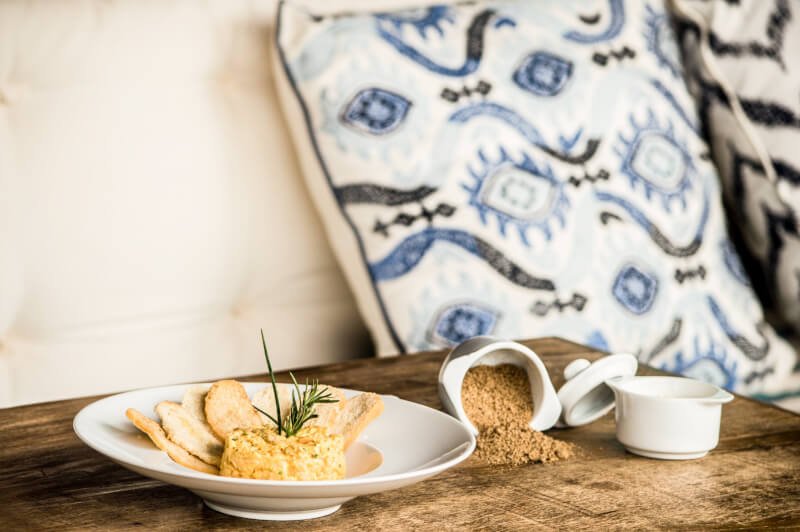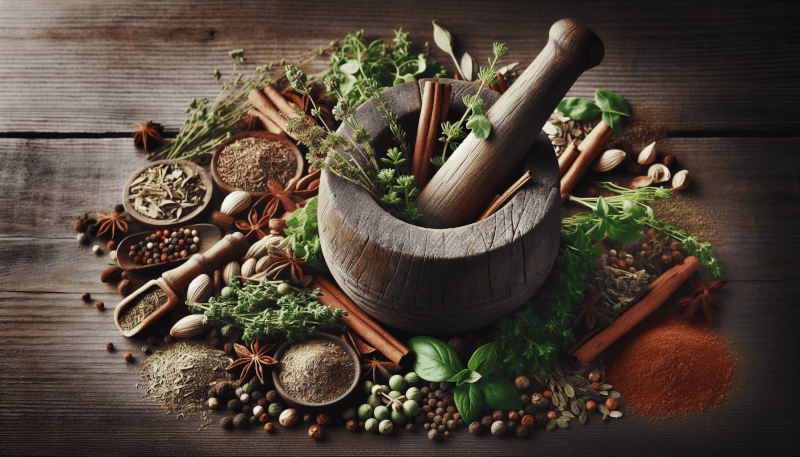If you’re looking to elevate your culinary game, there’s no better way than by incorporating homemade herbal infusions into your cooking. Whether you’re a seasoned chef or a novice in the kitchen, this article will guide you through the simple steps of creating deliciously flavorful infusions using fresh herbs. From infusing oils for drizzling over salads to brewing teas rich in aromatic herbs, you’ll discover how these homemade concoctions can take your meals to a whole new level of taste and sophistication. So grab your apron and let’s get started on this exciting journey of culinary exploration.

Choosing the Right Herbs
Choosing the right herbs is essential when making homemade herbal infusions for cooking. The flavor profile of the herbs you choose will greatly impact the taste of your infusion, so it’s important to consider the flavors you want to achieve. Are you looking for something bold and aromatic, or perhaps something more delicate and subtle? Think about the dishes you plan to use the infusion in and choose herbs that will complement those flavors.
When selecting herbs, you have the option of using fresh or dried herbs. Fresh herbs are great for their vibrant flavors and aromas, while dried herbs offer a more concentrated flavor. Consider the recipe you are making and choose accordingly.
Quality and freshness are key when it comes to herbs. Always check for any signs of wilting or discoloration, as this could indicate that the herbs are no longer fresh. Choose herbs that are fragrant and have vibrant colors, as these are usually the freshest options available.
Preparing the Herbs
Once you have chosen your herbs, it’s time to prepare them for infusing. If you are using fresh herbs, start by giving them a good wash to remove any dirt or debris. Gently pat them dry with a clean kitchen towel or paper towel.
If you are working with dried herbs, there’s no need to wash them. You can move on to the next step, which is drying the herbs. This step is crucial to get rid of any excess moisture, as it can lead to spoilage and mold in your infusion.
Crushing or chopping the herbs is another important step in the preparation process. By doing so, you are releasing the essential oils and maximizing the flavors of the herbs. Depending on the recipe or personal preference, you can finely chop the herbs with a knife or use a mortar and pestle to crush them.

Selecting the Infusing Liquid
The choice of the liquid for your herbal infusion is just as important as the herbs themselves. The most common options for infusing liquids include water, oil, vinegar, or alcohol. Each of these options will bring different flavors and characteristics to your infusion, so it’s important to choose wisely.
When selecting the right liquid, consider the flavor pairing with the herbs you have chosen. Certain herbs may pair better with certain liquids, enhancing their flavors and creating a harmonious combination. For example, citrus fruits like lemon or orange zest can be infused in water for a refreshing and citrusy flavor, while woody herbs like rosemary or thyme can be infused in olive oil for a robust and aromatic infusion.
Don’t be afraid to experiment with different options! The world of herbal infusions is vast and full of possibilities. You can try infusing herbs in different types of tea, broths, or even fruit juices. The only limit is your imagination.
Heating the Infusing Liquid
When it comes to heating the liquid for your herbal infusion, it’s important to do so gently. The goal is to release the flavors and aromas of the herbs without boiling the liquid. Boiling can be too harsh and may result in a bitter or unpleasant taste.
To gently heat the liquid, place it in a saucepan over low heat. Keep a close eye on it and gradually increase the temperature until it reaches a low simmer. This gentle simmer will allow the herbs to infuse into the liquid slowly.
Maintaining a low simmer is crucial throughout the infusion process. If the liquid starts to boil, reduce the heat immediately. Remember, patience is key when it comes to herbal infusions. The longer you allow the herbs to infuse, the stronger the flavors will become.

Infusing the Herbs
Now that your herbs are prepared, and your liquid is gently simmering, it’s time to infuse them together.
Start by placing the prepared herbs into a clean glass jar. Make sure the jar is large enough to hold both the herbs and the liquid.
Carefully pour the heated liquid over the herbs, ensuring that all the herbs are completely submerged. It’s important to have enough liquid to cover the herbs to maximize the infusion process.
Once you have added the liquid, cover the jar tightly with a lid or a piece of cheesecloth secured with a rubber band. This will prevent any contaminants from entering the infusion and ensure a clean and flavorful result.
Now comes the waiting game. Let the herbs infuse in the liquid for a minimum of 12 hours, but you can also leave them for up to a week for a more intense flavor. The longer you wait, the stronger the flavors will be. Remember to store the jar in a cool and dark place to preserve the freshness and integrity of the infusion.
Straining the Infusion
After the desired infusion time has passed, it’s time to strain the herbs from the liquid. This step is crucial to remove any solids or particles that may affect the quality and texture of your infusion.
Using a fine-mesh strainer or a piece of cheesecloth, strain the liquid into a clean container. The strainer or cheesecloth will catch any remaining bits of herbs, leaving you with a smooth and clear infusion.
If you want to extract every last bit of flavor from your herbs, gently press them against the strainer or cheesecloth. This will release any remaining liquid and ensure you get the maximum flavor from your infusion.

Storing the Infusion
Now that your infusion is strained, it’s time to transfer it to a clean bottle for storage. Choose a bottle that has an airtight seal, as this will help preserve the flavors and prevent any oxidation.
To keep track of your infusions, remember to label the bottle with the name of the herb used and the date it was made. This way, you can easily identify and rotate your infusions to ensure they are used within a reasonable timeframe.
It’s important to store your herbal infusions in the refrigerator to keep them fresh. Most herbal infusions will last for about a month when stored properly. However, always use your senses to check for any signs of spoilage before using any infusion.
Using Herbal Infusions in Cooking
Congratulations! You now have a delicious homemade herbal infusion ready to be used in your culinary creations. Here are some ideas on how to incorporate herbal infusions into your cooking:
- Use the infusion as a base for soups, stews, and sauces. The infusion will add depth of flavor and complexity to your dishes.
- Add a splash of your herbal infusion to marinades and dressings for an extra layer of flavor.
- Infuse oils or vinegars with your herbal infusion to create unique and flavorful salad dressings.
Get creative and experiment with different combinations of herbs and flavors to discover your own favorite recipes and applications.

Exploring Flavor Combinations
When it comes to herbal infusions, the possibilities are endless. Don’t be afraid to explore different combinations of herbs and experiment with flavors.
Consider pairing herbs with complementary flavors to create a well-balanced and harmonious infusion. For example, mint pairs well with lemon, while basil complements tomato-based dishes. Think about the flavors you enjoy and how certain herbs can enhance those flavors.
Additionally, consider cultural or regional influences when creating herbal infusions. Different cultures have their own unique herb combinations that are traditionally used in their cuisines. Exploring these flavor profiles can give you a deeper appreciation for different culinary traditions and open up new possibilities for your infusions.
Tips and Tricks
Here are some additional tips and tricks to help you perfect your homemade herbal infusions:
- Start with small batches when experimenting with new herb and flavor combinations. This way, if you don’t love the final result, you won’t waste a large amount of ingredients.
- Adjust the infusion time to achieve your desired flavor intensity. If you want a more subtle flavor, infuse for a shorter time. For a stronger flavor, let the herbs steep longer.
- Label and date your infusions for organization. This will allow you to keep track of the flavors and ensure you use your infusions within their recommended shelf life.
Enjoy the process of creating homemade herbal infusions and have fun exploring the world of flavors that await you!

